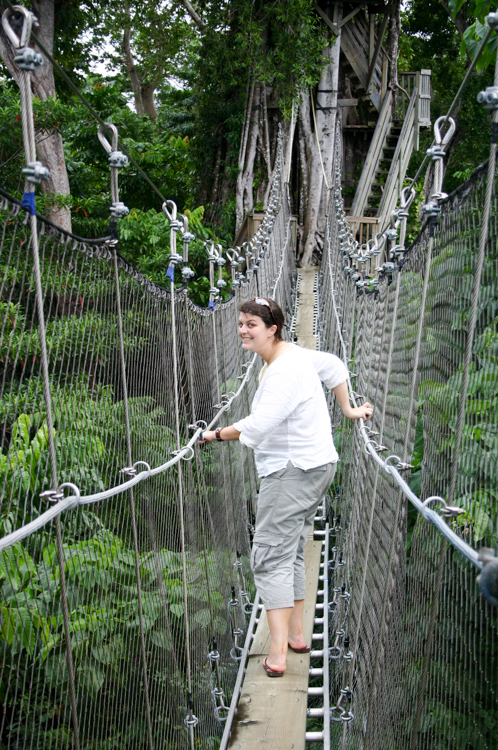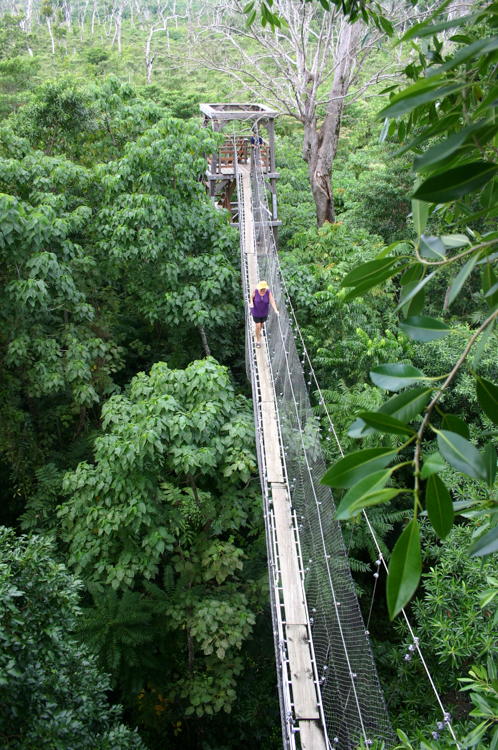Although we were due to celebrate Bronwyn’s birthday at a restaurant in Apia, Samoa, I needed to pop out to the tourist office to collect our tickets for our flight to Savai’i the following day. The guy in the shop handed me our tickets, but kept a grasp on them while he leaned forward and said in a conspiratorial whisper, “Can you take something to Savai’i for me?” I looked at him with what I hoped was a deadpan look, but which was likely horrified dismay, and said, “What is it?” He burst out into laughter. “Something very important!” and handed me the pay cheque for the bus operator.
Waking after a great night at Sails restaurant, we were up before dawn and into the waitress’ boyfriend’s taxi to the airport, where we were hoping to catch a flight to Samoa’s second island, Savai’i. Everybody said that we should allow an hour for the thirty-minute drive, but we didn’t run into any problems. Even before first light, though, the roads were lined with Samoans dozing in their little roadside fale, waiting for a bus to come along; this seemed to be a national pastime.
At the tiny airport, we watched as some international travellers checked in, each clambering solemnly onto the luggage conveyor so that their total weight – customer plus baggage – could be noted down. Going through our own check-in, we seemed to be the only domestic customers, but we weren’t too surprised as it is only a short hop between islands on a light plane. However, we still had to go through an X-ray, which revealed the penknife that lives permanently in my day-pack. The customs officers portentously decided that it was far too dangerous to allow it on the plane, so I excused myself for a moment and wandered back across the tin shed to the check-in, where I asked if they could hand my knife to the pilot. They looked a bit bewildered, but agreed to do it. I shrugged and headed back to the departure gate; either I’d see it again, or I wouldn’t.
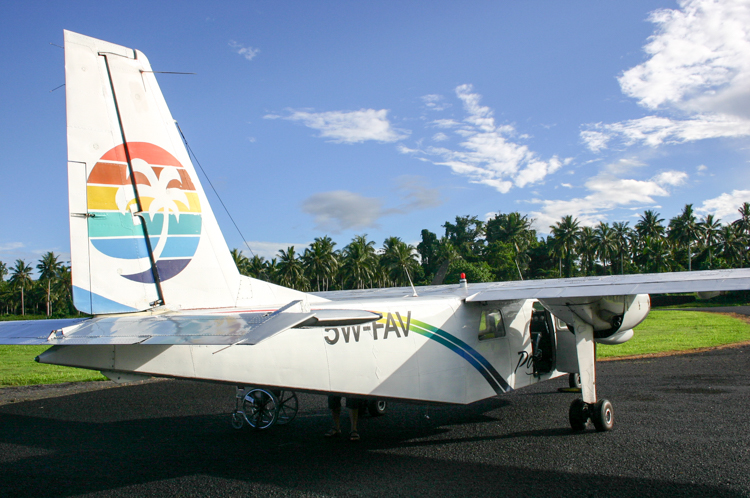
Our transport to Savai’i
Out on the tarmac stood a little eight-seater twin-prop. We squeezed in with a handful of missionaries, and then the Kiwi pilot clambered in alongside us. With a wide grin, he introduced himself and proclaimed, “Safety Announcement! The Emergency Exit is the same door that you came in. Please fasten your seatbelt. Thank you” and then we were rolling.

Arrival in Savai’i
After landing a quarter of an hour later, the pilot handed me my penknife, securely wrapped in rolls of paper and tape. “I have no idea why they did that”, he said.
Our bus driver was waiting for us. I gave him his pay cheque, which he in turn gave to a lady in the petrol station, who would give him cash on the way back. There was nobody else on the bus, and Savai’i has only one road, so we had a rather exclusive guided tour around the lush, green, and noticeably cooler southern part of the country.
The island has suffered two major volcanic eruptions, one in 1796 and the next in 1905. This latter eruption lasted for six years, so it is not surprising that much of the geology consists of lava. The black stuff remains surprisingly wet even in direct tropical sunlight, so it is also not surprising that it is popular for crops, and is often seen stacked up in cones around the base of young trees.
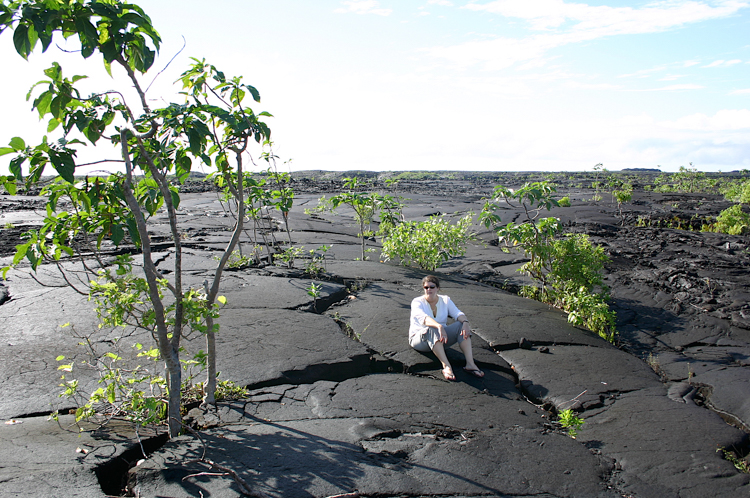
Bronwyn on a lava flow
The bus ambled around the island. We fed pieces of papaya (and some of my finger) to green turtles in a freshwater lagoon. We climbed down a lava tube, and up into a suspended treetop walk.
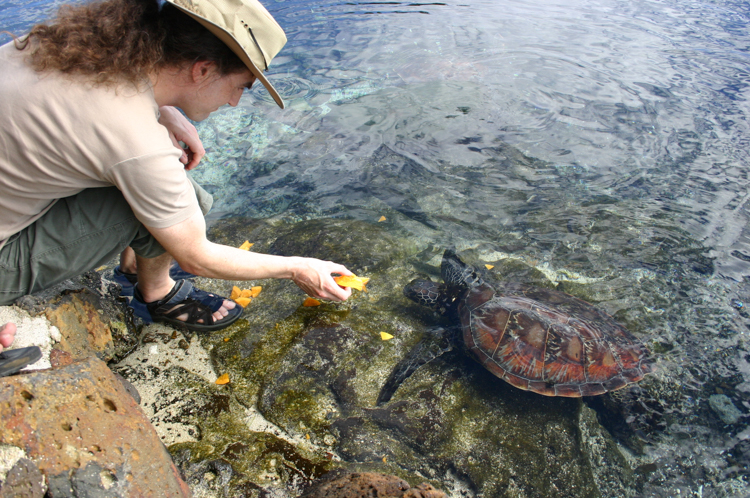
Feeding green turtles with mango
Each of these attractions is the collectively owned property of one village, and use of them attracts a very small fee per person, which is used for the upkeep of the schools and so on. This fee is not a tourist tax, it is a long tradition and payable by any outsider whether Samoan or not if they want to use that particular facility. The story of the treetop walk is particularly interesting. It was built by a Canadian who married a village girl, and wanted to find a way to make money for the village without cutting down the surrounding rainforest. The walk was a hugely successful venture, and the Canadian is now Matea (chief) of the village.
We had now almost circumnavigated the island; the last stop was the waterspout at Alofaaga. Another five tale to get in, then a further couple of tale to buy a bag of old coconut husks. A little puzzled, we followed our guide across a cracked and fissured lava flow, with waves hammering in from the sea and exploding high into the air. The ground felt hollow, and thrummed as we walked over it, wheezing and bubbling as each set of waves forced compressed air into the porous rock.
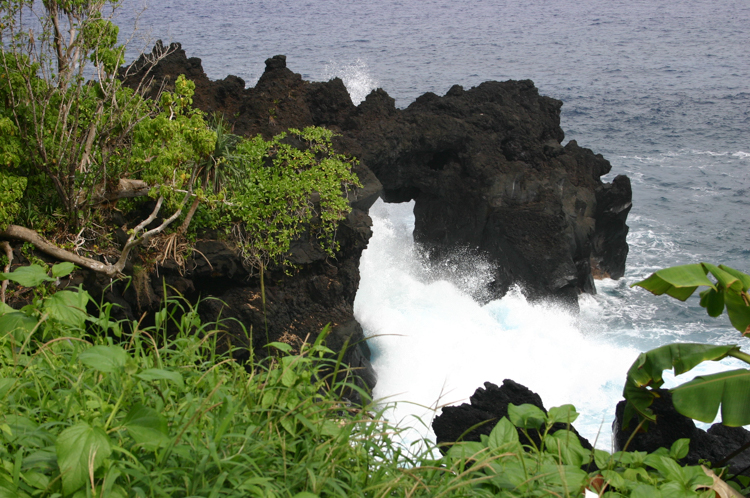
Raging foam under a lava arch at Alofaaga
Over to one side, closer to the water, were a number of vertical sink-holes. Here we discovered the purpose of the old coconuts; they are tossed into the hole, and when the next big wave comes along, it blows them out from below at the top of a huge waterspout. Our coconuts were projected fifty metres or more, a stunningly impressive sight, although our guide told us that the waves weren’t especially powerful that day.
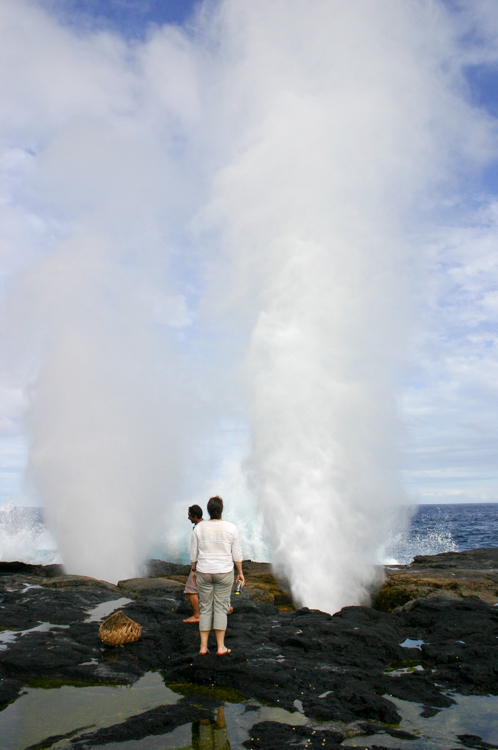
Bronwyn and the waterspout 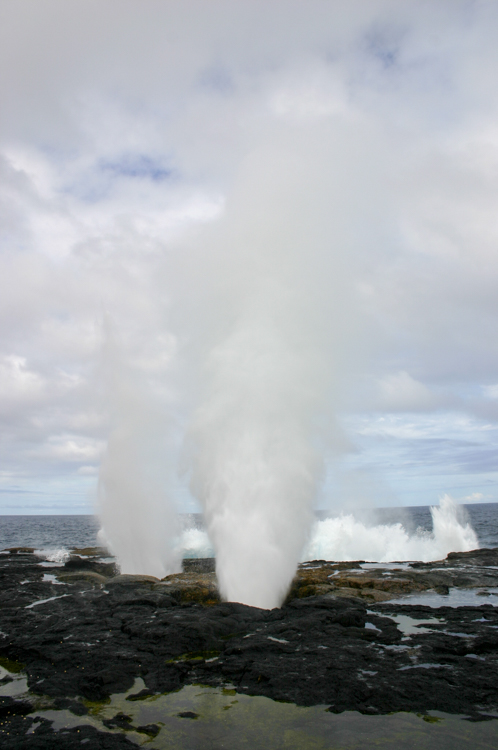
Coconut cannons
Our driver had tried to fit a lot into our day, and it was a bit of a desperate run for the ferry back to the north island. The flat roll-on roll-off barge was just about to depart when we arrived, so we quickly bought tickets and sidled aboard between rows of enormous 4×4 trucks carrying produce, to a seating area on the deck at the back. Here we found that the seats were all packed with locals indulging in their favourite pastime of sleeping.

The end of a long day 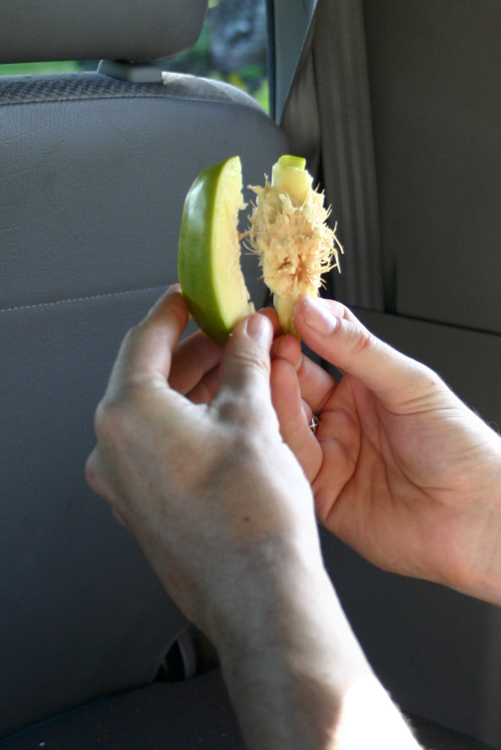
Strange fruit
We stood by the rail, and ate another of the rather bitter, nameless fruit that we had picked up at a market that morning, tossing the husks to the numerous zebra-striped fish in the sea below. It had been a long day, and soothed by the big smooth swells and the warmth of the funnel next to me, I too fell asleep.
